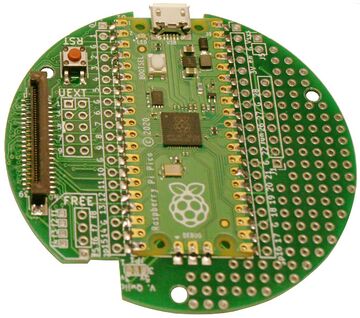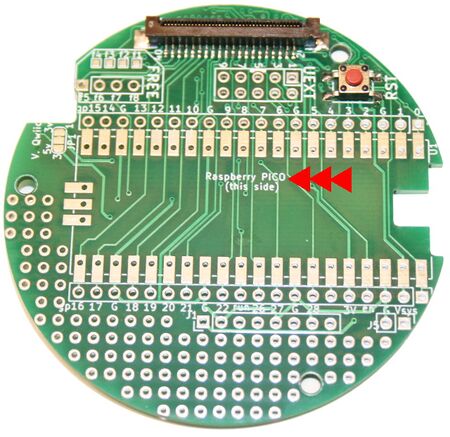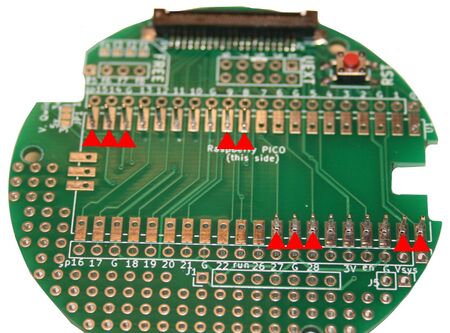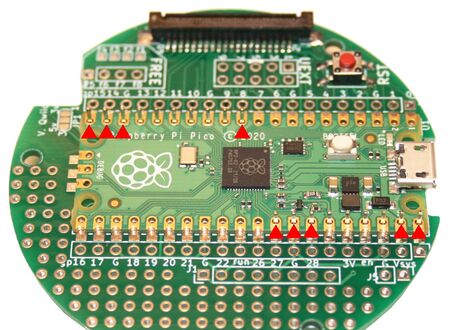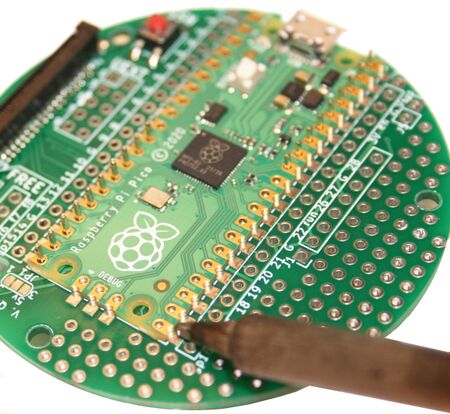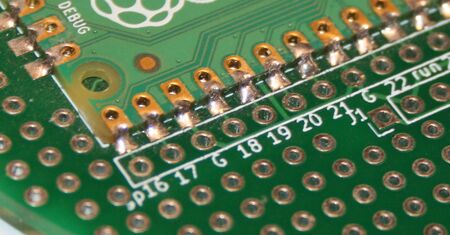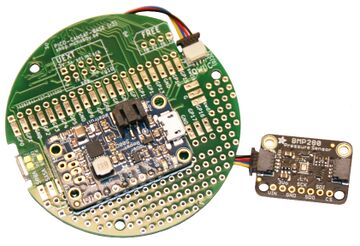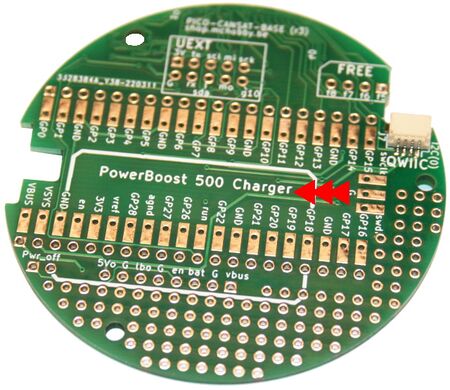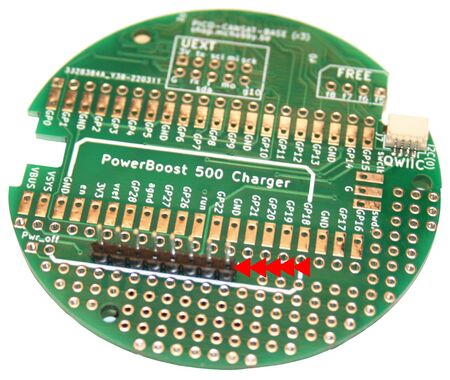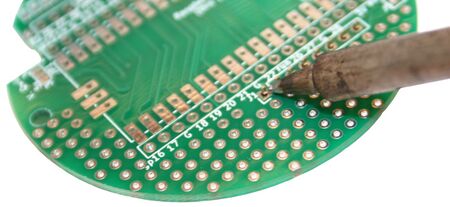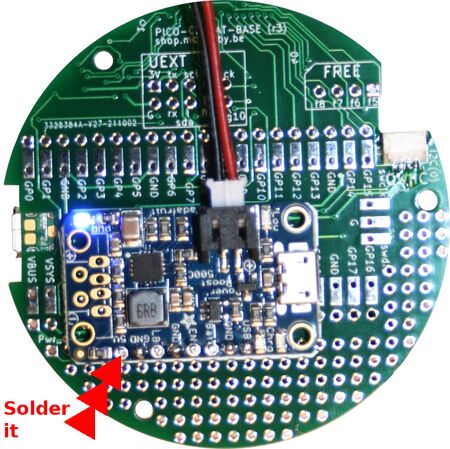Différences entre versions de « ENG-CANSAT-PICO-ASSEMBLY »
| Ligne 54 : | Ligne 54 : | ||
The PowerBoost 500 is the default powering system of this kit. | The PowerBoost 500 is the default powering system of this kit. | ||
| + | |||
| + | {{ambox-stop|text=The instructions doesn't applies to the PowerBoost 1000.}} | ||
{{traduction}} | {{traduction}} | ||
[[fichier:ENG-CANSAT-PICO-02.jpg|360px]] | [[fichier:ENG-CANSAT-PICO-02.jpg|360px]] | ||
| + | |||
| + | Let's solder it | ||
{{asm-begin}} | {{asm-begin}} | ||
{{asm-row|img=ENG-CANSAT-PICO-20.jpg}} | {{asm-row|img=ENG-CANSAT-PICO-20.jpg}} | ||
| − | {{asm-text}} | + | {{asm-text}} Pico up the base board with the back of the board on the desk. |
| + | |||
| + | You should see Qwiic connector and the text "PowerBoost 500 Charger" written. | ||
| + | |||
| + | {{asm-row|img=ENG-CANSAT-PICO-21.jpg}} | ||
| + | {{asm-text}} Place a section of 8 pins into the connector (the short part into the connector). | ||
| + | |||
| + | {{underline|text=use a small piece a paper tape to maintain the connector right in place. | ||
| + | |||
| + | {{asm-row|img=ENG-CANSAT-PICO-22.jpg}} | ||
| + | {{asm-text}} Flip over the board and solder the connector in place. | ||
| + | |||
| + | {{asm-row|img=ENG-CANSAT-PICO-23.jpg}} | ||
| + | {{asm-text}} Replace the board on the desk to see the "PowerBoost" text. | ||
| + | |||
| + | Slides the PowerBoost 500 as | ||
{{asm-end}} | {{asm-end}} | ||
Version du 13 mai 2022 à 19:58
Abstract
This tutorial can be conduct with your own source of materials.
If by any chance you have a Cansat Pico Kit, you do have the needed material but also additional boards to pre-assemble a CANSAT objet.
This section contains recommandations and tips to follow to quickly assemble your kit and be ready to work within 10 to 15 minutes.
Raspberry-Pi Pico Soldering
|
|
En cours de traduction/élaboration. |
The Pico is the MicroControler propeling the board.
It is soldered on the top of the Cansat Base Board, this can be done with Pin Header or directly flat on the board.
Lets starts to assemble it!
PowerBoost 500 Charger Soldering
The PowerBoost 500 is the default powering system of this kit.
| The instructions doesn't applies to the PowerBoost 1000. |
|
|
En cours de traduction/élaboration. |
Let's solder it
PowerBoost 1000 Charger Soldering
The PowerBoost 500 of the kit can be replaced with a PowerBoost 1000 to get more power (1000mA) from the Lipo battery
|
|
En cours de traduction/élaboration. |
RFM69HCW Soldering
The RFM69HWC is the radio module used in the CanSat-Pico kit to transmit data
|
|
En cours de traduction/élaboration. |
Written by Meurisse D. for MCHobby
